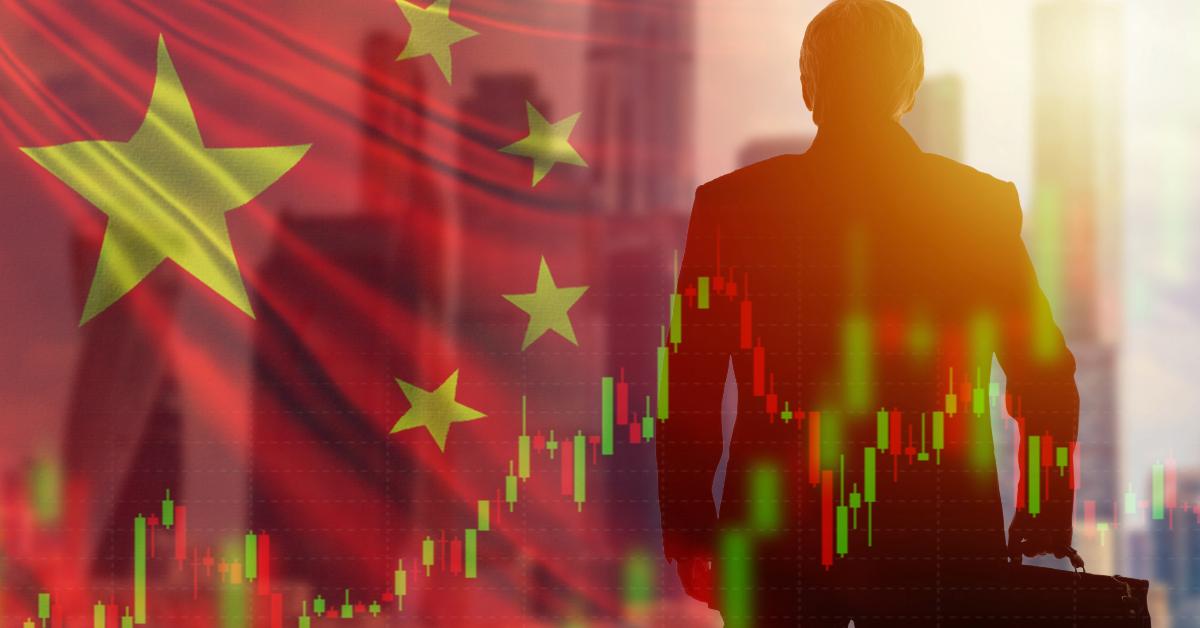
In recent decades, the Chinese Communist Party (CCP) has boasted about having lifted hundreds of millions of people out of poverty; however, they were only able to do this because hundreds of millions of people had been living in poverty under its rule. From the founding of the People’s Republic of China (PRC) in 1949 until the economic reforms of the late 1970s, the country’s economy was almost entirely centrally planned. The government controlled the factors of production and determined what products were made, in what quantities they were made, and at what prices they were sold. As a result of these policies, the country remained very poor.
In 1978, China’s gross domestic product (GDP) per capita was $156 per year. In the same year, GDP per capita in the United States was $10,564. Between the economic opening and 2010, China experienced double-digit GDP growth in most years. From 2010 to the present, however, its growth has been trending steadily downward. In 2022, growth was only 3 percent. Although China is the world’s second-largest economy, Chinese people are still relatively poor. The average income in China in 2022 was $12,823, roughly the same as in the US in 1980. China has worked toward reducing wealth disparity and has a Gini coefficient of only 3.8 percent as of 2019, but roughly half the population still survives on an income of less than ten dollars per day.
Until his death in 1976, Mao Zedong held what were the three most important leadership positions in the PRC at the time: chairman of the CCP, chairman of the Central Military Commission (CMC), and chairman of the PRC (head of state). Mao’s tenure was marked by a strict communist economy with almost no profit incentives or private ownership. His economic campaign, the Great Leap Forward, which lasted from 1958 to 1962, resulted in the Great Chinese Famine, which killed tens of millions of people. After Mao’s death, Deng Xiaoping, paramount leader from 1978 to 1989, gradually began opening the economy, launching China’s period of exceptional growth.
During China’s greatest years of economic development, the economy became more liberal each year. However, the Tiananmen Square massacre in 1989 made it clear that the CCP saw economic liberalization and the liberalization of civil society as distinct concepts. That same year, the CCP banned entrepreneurs from joining the party. Although a ruling in 2001 allowed business owners to become members, liberalization peaked around 2012 when Xi Jinping, the current leader, took office. Since then, the country has been reverting to a more restrictive form of market socialism.
Xi holds today’s three highest positions in government: general secretary of the CCP, chairman of the CMC, and president of the PRC. Consequently, he is recognized by the CCP as the nation’s paramount leader. Under Xi’s leadership, presidential term limits were removed, and in 2022 he was given a third term as party secretary, president, and chairman of the CMC. Presumably, he will have the option to rule for life, although the CCP denies this.
Nominally, China is a multiparty democracy, but the eight minor political parties must concede the leading role of the CCP, and it is illegal for them to attempt to win control of the government. Citizens vote for delegates at the village and neighborhood levels, but they have no say at the provincial and national levels of government. The outcomes of elections at the highest party’s congresses are generally determined in advance. In 2013, when the National Party Congress voted to install Xi as president for the first time, his name was the only one on the ballot.
In 2013, Xi launched his vision for a China-led world order with the Belt and Road Initiative (BRI). The BRI is a global infrastructure development program, now encompassing 148 nations. BRI projects include roads, seaports, airports, telecommunications, hospitals, energy, and mineral extraction. Financing for these projects comes from a variety of sources, including loans from Chinese policy banks (such as the China Development Bank and the Export-Import Bank of China), Chinese commercial banks, and investments from Chinese enterprises. The banks financing the BRI are completely or partly owned by the government. Additionally, many of the companies involved with these overseas projects are state-owned enterprises (SOEs).
Socialism with Chinese characteristics can be described as state-led capitalism. While China’s economy has undergone market-oriented reforms, the state maintains significant control. In 1978, Deng Xiaoping established the household responsibility system. Under it, once farmers had met the state quota, they could sell their surpluses at a profit. Private enterprise in nonagricultural sectors began in 1980, the same year the first special economic zone was established in Shenzhen, Guangdong Province. The special economic zone facilitated trade between China and the outside world and began China’s march toward export-oriented growth. China became the world’s factory.
The next phase of development, beginning in about 1999, involved growth driven by government investment. This period was characterized by infrastructure development projects, including the construction of roads, bridges, railways, and airports. These projects accelerated as the population urbanized. In 2007, China implemented its first private property law. Combined with the government’s investment strategy, it led to a boom in the housing sector. Today, real estate accounts directly for 6 to 7 percent of GDP, while related industries and services make up 30 percent of the overall economy.
There are no independent trade unions in China; all unions fall under the CCP-affiliated All-China Federation of Trade Unions. The CCP also maintains SOEs accounting for about 25 percent of GDP. SOEs operate in all industries, including manufacturing, mineral extraction, banking, and even hotels and restaurants. The CCP appoints the managers and supervisors of SOEs and directs their decision-making. In return, SOEs receive a number of benefits, such as state subsidies, easier access to capital from state-owned banks, and raw materials from state-owned mining companies. SOEs also get policy support, tax benefits, and a favorable regulatory framework. With the government providing these advantages, SOEs dominate strategic sectors such as energy, telecommunications, banking, and transportation.
Private companies of a certain size are required to maintain a party cell, a CCP committee responsible for implementing and maintaining party policies, adhering to political ideology, and upholding party discipline. Party committees influence decision-making and strategic planning, as well as the hiring, firing, and promoting of personnel.
Even foreign-owned companies and joint ventures and partnerships with foreign companies are required to maintain a party cell. Furthermore, the CCP maintains lists of sectors that are either closed to foreign companies or only open through a joint venture with a Chinese partner.
China’s entire economy is strategically mapped out through a series of five-year plans. These initiatives set annual growth targets and stipulate how the economy should grow and which sectors to prioritize. Because the CCP controls both domestic and foreign companies, Beijing can thereby influence investment decisions, resource allocation, and business strategies to help the state achieve its goals.
The Fourteenth Five-Year Plan, which runs from 2021 to 2025, focuses on “innovation and leading high-quality development.” With only 1.7 births per family, China is facing an aging crisis. At the same time, it is pricing itself out of the low-end manufacturing labor market. Factory workers now earn three to four times what their counterparts do in Vietnam and Indonesia. The only way the economy can maintain itself under these conditions is by shifting toward higher-value-added manufacturing and services. To this end, the Fourteenth Five-Year Plan aims at an “upgrading of the industrial base and the modernization of industry chains.”
Developing higher-value manufacturing depends on receiving foreign direct investment (FDI), which is trending downward for China. In some sectors, like electronics, FDI was down 56.7 percent between 2019 and 2022. Investors have been scared off by a general economic slowdown, tensions with the US, and the possibility of war with Taiwan. China’s new Counter-Espionage Law, which took effect in July and dramatically increases the possibility of arbitrary detention, is further spooking investors and visitors.
Despite facing economic headwinds, the CCP continues to tighten its grip. The Fourteenth Five-Year Plan promises to “forcefully develop the digital economy,” aiming to use “data-based national governance capabilities and transform the structural advantages of Socialism with Chinese Characteristics into powerful national governance abilities”—a reminder of the party’s power. For all of China’s reforms, the country is still largely socialist and veering toward greater state control, even at the expense of prosperity.




